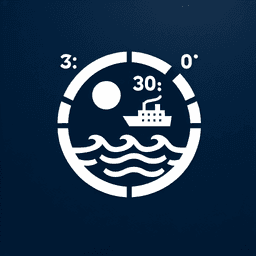
Kelvin Count: Definition and Examples
January 16, 2025
Kelvin Count
The term "Kelvin Count" is often used in maritime contexts to refer to a method of measuring the temperature of seawater, which is crucial for various navigational and operational purposes. Named after the renowned physicist Lord Kelvin, this measurement is expressed in Kelvin (K), a unit of absolute temperature.
Understanding the Kelvin Count is essential for sailors and maritime professionals as it helps in assessing the thermal conditions of the ocean. This information can be vital for predicting weather patterns, understanding ocean currents, and ensuring the safe and efficient operation of vessels.
In practical terms, the Kelvin Count can influence decisions related to route planning and fuel efficiency. For instance, knowing the temperature of the water can help in determining the best routes to avoid adverse weather conditions or to take advantage of favorable currents.
Moreover, the Kelvin Count is also significant in the context of marine biology and environmental monitoring. It aids in tracking changes in sea temperature, which can impact marine ecosystems and biodiversity.
Overall, the Kelvin Count is a fundamental concept in maritime operations, providing critical data that supports navigation, safety, and environmental stewardship at sea.
Understanding Kelvin Count in Maritime Contexts
The term Kelvin Count may not be directly familiar to maritime professionals, but it is closely related to the concept of temperature measurement in Kelvin, a critical aspect in various maritime operations. Here, we explore how understanding Kelvin measurements can benefit maritime users.
What is Kelvin Count?
Kelvin Count, in some contexts, refers to the color temperature of a light source, which can influence visibility and safety on ships. However, in a broader scientific sense, Kelvin is the base unit of temperature in the International System of Units (SI), essential for precise temperature measurements.
Applications of Kelvin in Maritime Operations
- Engine Efficiency: Monitoring engine temperatures in Kelvin ensures optimal performance and prevents overheating, which is crucial for maintaining the longevity and efficiency of maritime engines.
- Weather Forecasting: Accurate temperature readings in Kelvin are vital for predicting weather patterns, aiding in navigation and ensuring safety at sea.
- Material Durability: Understanding how materials react to different temperatures helps in selecting appropriate materials for shipbuilding and maintenance, ensuring durability and safety.
People Also Ask
- What is the definition of 1 Kelvin? One Kelvin is defined as 1/273.16 of the thermodynamic temperature of the triple point of pure water. This precise measurement is crucial for scientific calculations and applications.
- What is 1 Kelvin in degrees Celsius? 1 Kelvin is equivalent to -272.15 degrees Celsius. This conversion is important for understanding temperature changes in a more familiar scale.
While the specific term 'Kelvin Count' might not be widely used in maritime contexts, the principles of Kelvin temperature measurement are integral to various aspects of maritime operations, from engine management to safety protocols.




